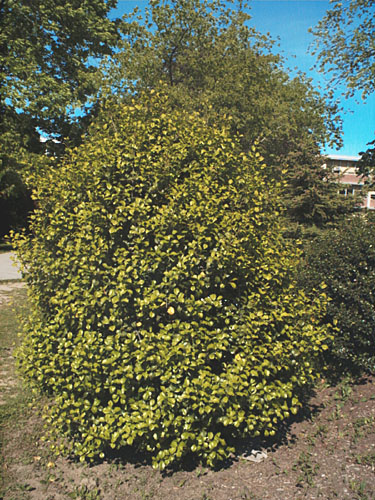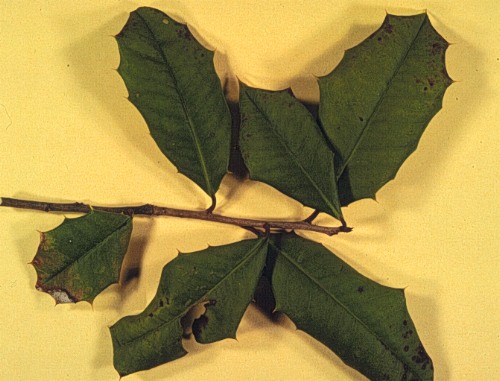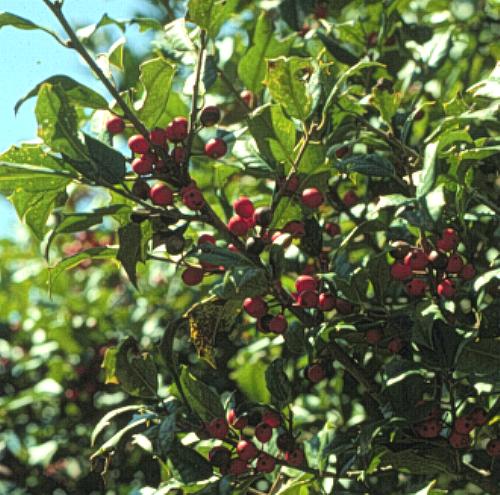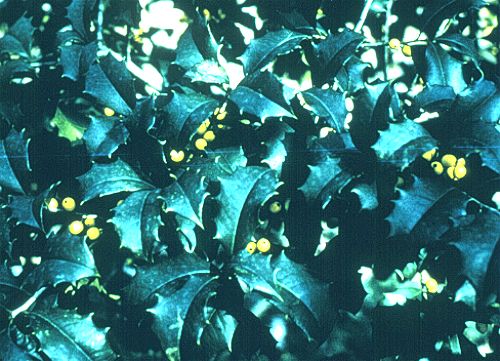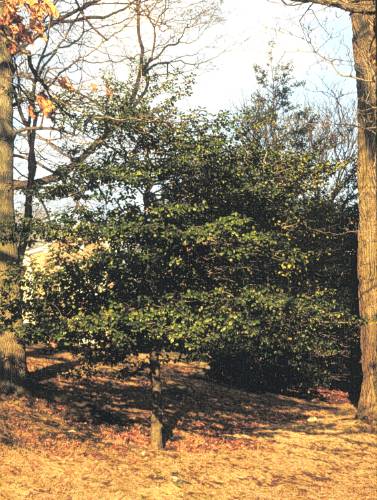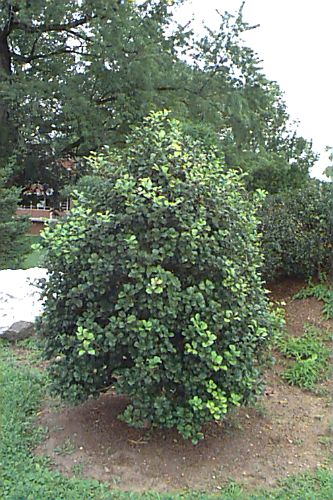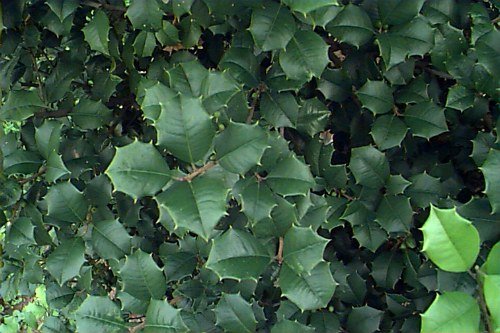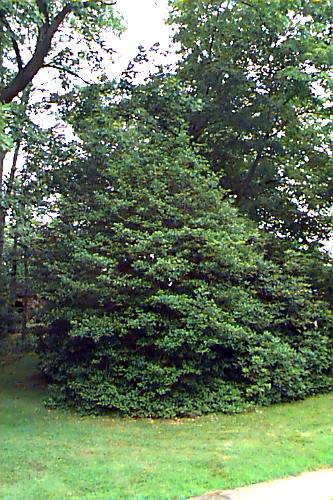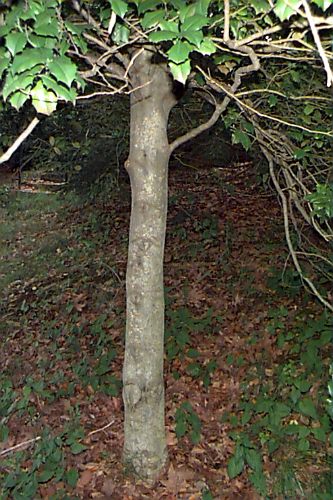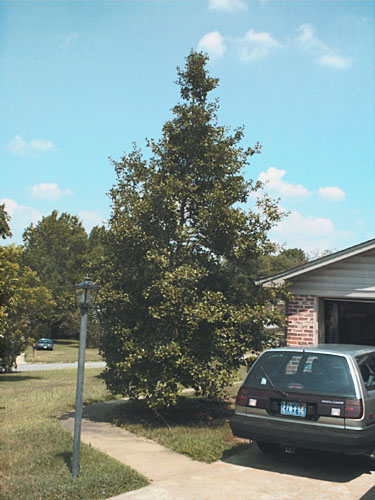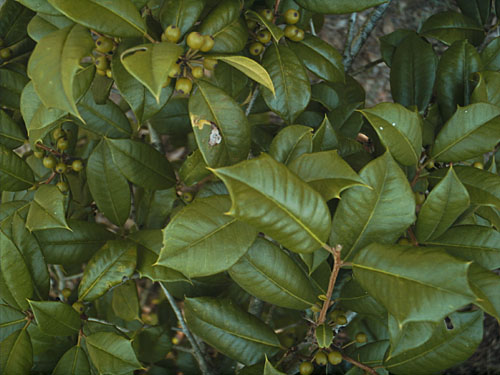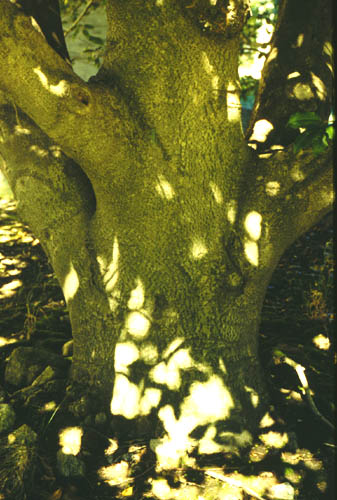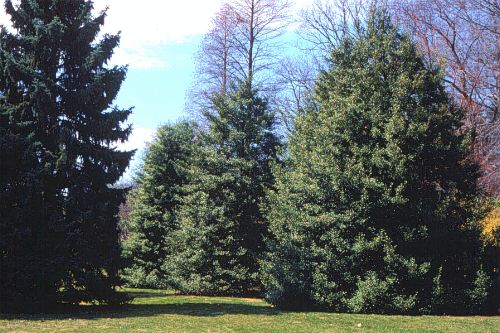Ilex opaca
American Holly
Aquifoliaceae
ExpandHabitat
- native to eastern and southern United States
- zone 5 (protected locations)
- more common in states south of New England
Habit and Form
- an evergreen small tree
- can reach up to 50' in the southeastern United States
- most landscape plants, especially in the northern half of its range, are 15' to 30' tall
- densely pyramidal when young with branches to the ground
- becoming slightly more open with maturity, but still maintains roughly a pyramidal shape
- older plants have horizontal branching
Summer Foliage
- alternate evergreen leaves
- 1.5" to 3.5" long and about half as wide
- leaves have short spines
- dull, dark, green or yellow-green color above and lighter underneath
Autumn Foliage
- evergreen, no fall color
Flowers
- dioecious, with male and female plants
- blooms in June
- small white flowers
- male flowers in groups of 3 or more
- female flowers solitary
Fruit
- small red fruits, borne on a stalk
- only on female plants
- mature in October and persist into the winter
- good fruiting selections are very showy in fruit
- need 1 male plant per 3 female plants for good fruit set
Bark
- smooth until quite old
- gray-brown
Culture
- prefers moist, acidic well-drained soil
- transplant from container or B&B
- full sun to light shade is best
- site in protected sites, especially from wind
Landscape Use
- specimen
- tall screen
- for fruit and evergreen foliage
- large hedge
- in small groupings
- tolerant of air pollution an salt
Liabilities
- lack of solid cold hardiness in zone 5
- winter burn and injury can occur
- leaf minor damage
- leaf spot
- scale is occasionally problematic
- fruit only develops on pollinated female plants
ID Features
- alternate leaves
- spiny evergreen leaves with dull green color
- leaves large, up to 3.5" long
- spines point out from leaf margins
- dense pyramidal outline
- red fruits (if persist) on female plants
- smooth bark
Propagation
- cultivars by cuttings taken in late fall
- seeds possesses deep dormancy
Cultivars/Varieties
As a general rule, only improved selections of I. opaca should be used for landscaping, since they will have superior appearance and utility to most seedlings. There are many cultivars to choose from, but those listed below are most common and/or adapted for New England growing.
'Canary' - This is a common representative cultivar of f. xanthocarpa. It is yellow-fruited with abundant fruit production.
'Clarendon' (also listed as 'Clarendon Spreading') - This is a dwarf, shrubby form reaching 8' tall and much wider. It bears glossy olive-colored leaves and orange-red berries on a shrubby, spreading frame.
'Croonenburg' - This plant is unusual in that it bears both female and male blooms on the same plant, thus it may bear red fruit without a separate pollinator. It is a columnar, dense tree with glossy leaves that are less spiny than normal.
'Howard' - An older cultivar that has been used extensively in plantings, this plant has nearly spineless, dark green leaves and abundant red fruit. The habit is columnar and dense.
'Jersey Knight' - A male form with good dark green foliage, this Rutgers introduction is a good pollinator.
'Jersey Princess' - Widely considered one of the finest fruiting cultivars, this Rutgers offering holds its lustrous green leaf color and bright red fruit well into winter. It is one of the more common commercial cultivars.
'Maryland Dwarf' - A very unusual form that is gaining popularity, this compact plant is shrubby and spreading. The mature height is around 3' tall, but it may spread to 10'. The foliage is glossy and deep green.
'Old Heavyberry' (also listed as 'Old Heavy Berry') - Widely considered to be one of the best cultivars available, this tree is vigorous with large dark green leaves and profuse large red fruits. It also reportedly possesses very good winter hardiness.
'Steward's Silver Crown' - One of the hardier variegated evergreen hollies, this plant bears leaves edged with cream and red fruit. It should reach 20' tall. Branches from trees such as this cultivar are frequently harvested for holiday decorations.
f. xanthocarpa - This naturally-occuring variant includes all yellow-fruited forms. It is sometimes listed as a cultivar name. Plants are occasionally found throughout the natural range, including in Massachusetts.
